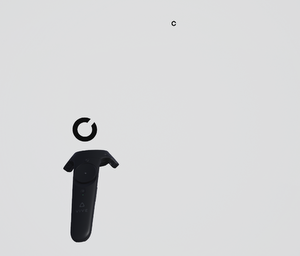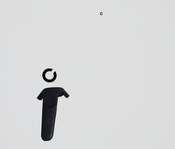Information
- Publication Type: Bachelor Thesis
- Workgroup(s)/Project(s):
- Date: November 2019
- Date (Start): April 2019
- Date (End): November 2019
- Matrikelnummer: 01527648
- First Supervisor: Katharina Krösl
- Keywords: virtual reality, visual acuity
Abstract
The perceived visual acuity (VA) of people in virtual reality (VR), using a head-mounted display (HMD), is not equal to their VA in the real world. The reason for this difference is the reduction of visual acuity in the virtual environment that is caused by various factors, such as the low resolution of the VR display. Based on those circumstances, the capacity of an individual to distinguish small details diminishes visibly. Previous studies regarding eyesight in VR have already verified how the best visual resolution in virtual environments is always lower than the natural vision and therefore this aspect could be seen as a mild vision impairment for the users of an HMD. The goal of this project is to investigate how much the VA is reduced in VR and respectively whether the decrease of VA in VR is perceived similar by everyone or if visual impairments like Myopia, influence the visual perception. Based on a previous project, two different tests were implemented with the game engine Unreal Engine 4, a VR version for which an HTC VIVE headset was used, along with a desktop version. These tests were used to investigate the VA of the participant in a user study and the results have been compared to each other in order to find the extent to which visual impairments have an impact on VA.Additional Files and Images
Weblinks
No further information available.BibTeX
@bachelorsthesis{panfili-2019-VAVR,
title = "Effects of VR-Displays on Visual Acuity",
author = "Lara Panfili",
year = "2019",
abstract = "The perceived visual acuity (VA) of people in virtual
reality (VR), using a head-mounted display (HMD), is not
equal to their VA in the real world. The reason for this
difference is the reduction of visual acuity in the virtual
environment that is caused by various factors, such as the
low resolution of the VR display. Based on those
circumstances, the capacity of an individual to distinguish
small details diminishes visibly. Previous studies regarding
eyesight in VR have already verified how the best visual
resolution in virtual environments is always lower than the
natural vision and therefore this aspect could be seen as a
mild vision impairment for the users of an HMD. The goal of
this project is to investigate how much the VA is reduced in
VR and respectively whether the decrease of VA in VR is
perceived similar by everyone or if visual impairments like
Myopia, influence the visual perception. Based on a previous
project, two different tests were implemented with the game
engine Unreal Engine 4, a VR version for which an HTC VIVE
headset was used, along with a desktop version. These tests
were used to investigate the VA of the participant in a user
study and the results have been compared to each other in
order to find the extent to which visual impairments have an
impact on VA. ",
month = nov,
address = "Favoritenstrasse 9-11/E193-02, A-1040 Vienna, Austria",
school = "Research Unit of Computer Graphics, Institute of Visual
Computing and Human-Centered Technology, Faculty of
Informatics, TU Wien ",
keywords = "virtual reality, visual acuity",
URL = "https://www.cg.tuwien.ac.at/research/publications/2019/panfili-2019-VAVR/",
}

 image
image thesis
thesis

